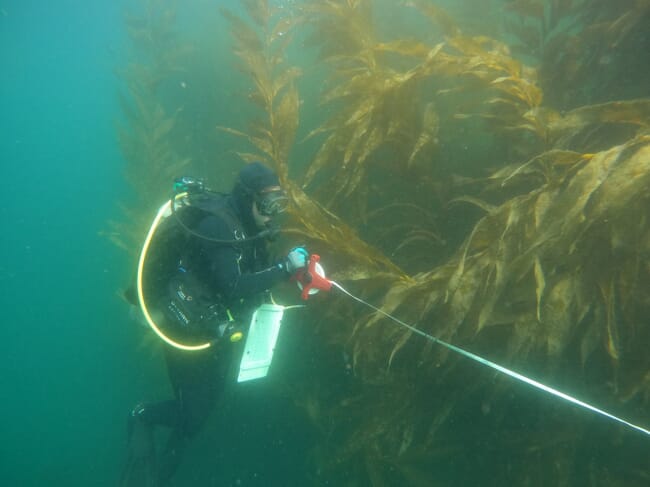
© Cyanotech
In an era where health consciousness is at an all-time high, the global health and wellness market continues to climb, but how can algae producers capitalise on this growth?
This is a question I’ve been investigating, and I’ve recently produced an in-depth report on the topic, titled Algae's Place in the Health and Wellbeing Market Trends. It was written in collaboration with James Dillard, co-founder of Macro Oceans, who has experience at some of the best product companies in the world.
In it, we explore the enduring macro trends shaping the health and wellbeing market, offering actionable insights for innovators and entrepreneurs involved in algae-based foods or nutraceuticals.
Why is this guide important?
I believe it's crucial to start with the customer in mind and solve existing problems in the market. Too often, passion-driven ventures fall into the trap of being product-centric rather than customer-centric. They assume algae’s potential and incredible properties are enough to drive demand without first asking what consumers actually care about. This approach is risky. It can lead to products that, while objectively impressive, fail to gain traction in the market.
Success in the algae industry hinges on understanding and addressing genuine needs and preferences, creating products that truly resonate with consumers.
The guide dives deep into six durable consumer trends which are highly relevant to algae-based foods and nutraceuticals:
- Functional ingredients: the lines between the food industry and the health industry are becoming increasingly blurred. Nutrient-dense foods and star ingredients take the spotlight for the effect they have on the human body and mind.
- Interconnectivity: health is increasingly viewed holistically, with consumers recognising the interconnected nature of physical, mental and emotional well-being.
- Healthy ageing: people of all ages are interested in maximising vitality, longevity and quality of life at every stage. The goal is to add life to years, not just years to life.
- Personalisation: enabled by advancements in data and technology, consumers expect and are willing to pay for tailored solutions that cater to their unique health needs and preferences.
- Sustainability: demand is growing for products and brands that embrace practices to reduce environmental impact, while ensuring food quality and safety.
- Gut health: consumers focused on their gut health are making dietary changes as they recognise that a balanced microbiome is crucial for digestion, nutrient absorption, immune function and mental health.
For each trend, we explored where algae can have a competitive advantage in meeting consumer demands, providing an honest assessment of algae’s biggest assets as well as potential challenges and areas for further research and development.

While kelp farms have environmental benefits, that's not the main reason consumers are attracted to algae-based products according to the new report © Ocean Rainforest
Common themes and key takeaways
When researching our article, we noted a few key themes for how algae can fit, and what challenges it faces, when considering all six consumer trends.
Algae’s assets
1. Nutrient density
The rich and diverse nutrient profile stands out as algae's biggest asset. Although different species will have different nutrient profiles, algae in general are rich in essential nutrients and bioactive compounds. These include a range of vitamins, minerals, dietary fibre, protein, omega-3 fatty acids and antioxidants, which provide multiple health benefits. Algae's versatility in this regard positions it as a promising ingredient across various health and wellness applications. For instance, many green powder supplements such as AG1 and Huel Daily Greens include algae as one of their top ingredients.
2. Sustainability
There is a halo of positive environmental impact surrounding all things algae. This sustainability glow boosts the appeal of algae-based products, with consumers perceiving it as a nice differentiator. However, it is important to recognise that sustainability is currently not the main reason customers buy; taste and health benefits still take precedence, alongside price and convenience.

Algae’s liabilities
1. Nutrient fluctuation
Nutrient composition can fluctuate even within the same species due to factors such as geographic location, cultivation methods and environmental variables. This variation presents a significant complication for product developers and could leave customers confused. Microalgae are primarily cultivated in controlled environments, which offer a more reliable and consistent product. On the other hand, the supply chain of seaweed is currently extremely immature, with wild harvesting competing against cultivation, a general lack of standardisation, and insufficient data around nutritional profiles, product safety and traceability. Nutrient fluctuation is not unique to algae. In fact, land agriculture also experiences variability in the nutrient profiles of fruit and vegetables due to factors such as soil quality, climate and weather conditions, agricultural practices (fertilisation, irrigation, etc.), harvesting time, storage and processing conditions. Additionally, the last 60 years have seen an alarming decline in the nutritional density of land crops, which highlights the importance of exploring alternative nutrient sources like algae.
2. Unfamiliarity
An issue that has emerged repeatedly is the unfamiliarity of Western consumers with algae, which may limit mainstream adoption. This is true both in terms of potential resistance to accepting the unusual characteristics of algae (e.g. taste and texture) and also in terms of a general lack of knowledge of algae’s benefits. A possible way around it is to use small quantities of algae as additives rather than the star ingredient. Alternatively, conceal the ingredient in a format where the taste and texture are not detectable.
Brands are finding innovative ways to apply these strategies and enhance appeal. For instance, Rootless developed a 'Daily Bite' combining seaweed with dates, almonds, and seeds into a craveable treat. Meanwhile, Doctor Seaweed created a line of supplement products in the form of 500mg capsules containing dried Hebridean Ascophyllum nodosum powder.
3. Iodine and heavy metals
High levels of iodine and the presence of heavy metals in seaweed can be a challenge, due to their toxicity risk. Although iodine is an essential nutrient and can represent a great competitive advantage, excessive iodine intake poses a serious health risk as it can disrupt thyroid function. A range of measures can be taken to mitigate this risk – including clear information to help customers manage their iodine intake, developing product formulations that ensure safe limits are not exceeded, regular testing and standardisation. With regards to heavy metals, it is crucial for manufacturers to source from clean waters, regularly test for contaminants, and adhere to regulatory requirements to ensure products are safe for human consumption.
The full in-depth article, "Algae's Place in the Health and Wellbeing Market Trends" is available for download here.
Your insights will be invaluable, so please reach out on LinkedIn.



